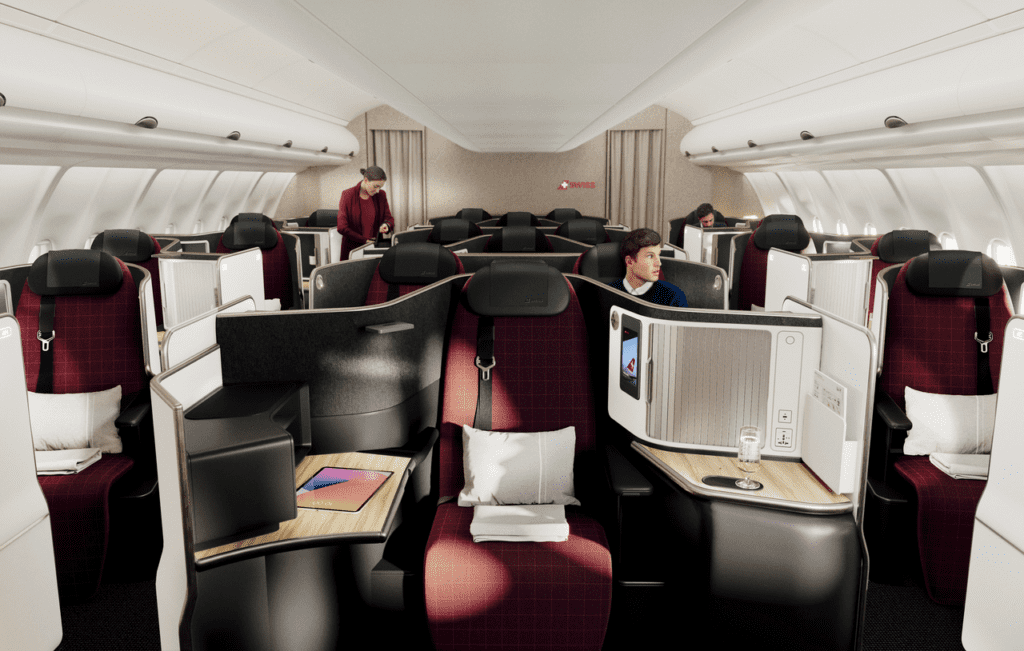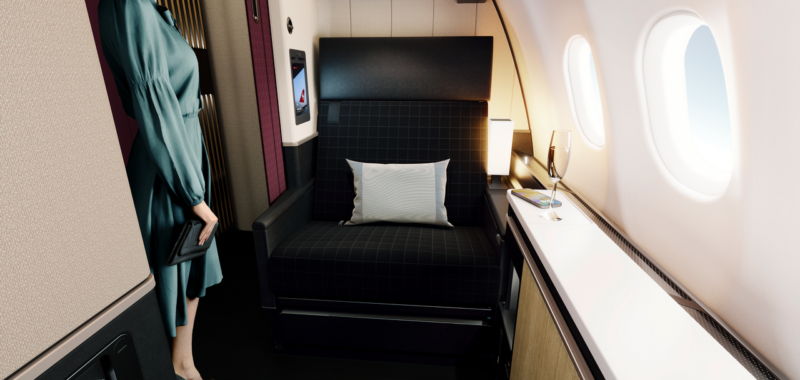Skift Take
Airlines are obsessive about reducing weight to keep fuel costs down and bolster environmental credentials. This decision from Swiss will not have come lightly.
The Swiss are globally renowned for engineering excellence, but its national carrier is placing this hard-won reputation under strain with an almighty design oversight.
Swiss International Air Lines is doing the unthinkable and deliberately adding weight to some of its planes. The culprit? Its new first and business class seats are too heavy creating a potentially serious weight and balance problem.
The location of the first and business class sections towards the front of the plane is making some aircraft ânose-heavyâ. Swiss is discovering this late in the design process, with extreme measures required.
The problem is particularly acute onboard the carriersâ Airbus A330-300 fleet. Itâs a model thatâs been flying for more than three decades and has a reputation as a reliable workhorse for mid- to long-haul routes. It does however have its limits.
The new premium seats Swiss wants to install on the A330s will disrupt the natural center of gravity on the planes. Instead of revising its ‘SWISS Senses’ design â which is a variation on parent firm Lufthansaâs Allegris product â the company is adopting a cruder workaround. The affected jets will have a metal âbalancing plateâ installed toward the rear of the aircraft.
A Swiss spokesperson confirmed to Skift that the plate will remain onboard âuntil other options can be developed to provide the balance required.â Described by the airline as a âcompensatory deviceâ, the company says its exact weight is still to be determined. Industry sources suggest it could be as much as 1.5 tons.
How Did Swiss Get Here?
Design efficiencies are making economy seats lighter than ever, but the same cannot be said for premium options. A quest for more luxury and amenities in top-tier cabins is making these seats much heavier than those they replace.
Reflecting the wealthy country it serves, Swiss is known for its high-end products and service. The Airbus A330 is a particularly weak link. Its dated premium cabins are in need of an overhaul to match modern passenger expectations. As the Swiss spokesperson put it: âCustomers are telling us in no uncertain terms that it is time we modernized the cabin interiors of our long-haul aircraft, and especially our Airbus A330-300s.â

The airline admits that speed is a priority. It notes that it wants to âmeet these clear customer needs as swiftly as possible.â Swiss describes the balancing plate option as a tried and trusted approach that can be rapidly installed.
Did Swiss Have Alternative Options?
Put simply, yes. The carrier acknowledges that there are various ways of tackling the weight distribution problem. One of the most obvious solutions is scrapping first class altogether, however, this would jar with the companyâs market positioning. Swiss is the only major airline to operate first class on all of its long-haul planes. This distinctive USP is considered untouchable, especially amid a boom in premium travel.
Alternative workarounds include changing the routes served by the A330s, adjusting its cargo capacity, or adding more economy seats. Swiss said âactions of this kind were not high among our options,â with passengers’ wellness and comfort remaining a top priority.
The airline highlights several more subtle tweaks that have helped reduce overall weight, albeit not to the extent that the metal plate is not required.


Swissâ existing first class cabin on the A330 has eight seats. The new design will have just three âFirst Suitesâ. Elsewhere, it is breaking from an industry trend by not installing sliding doors on individual business class seats. Swiss says this will save around 10kg (22lbs) per seat, but its impact on passenger experience is less clear.
Could the Problem be Predicted?
In an age of greater sustainability awareness and accountability, flying extra metal around the world so first-class passengers can be more comfortable is a challenging sell.
Defending its decision, Swiss said the issue was difficult to predict: âAt the outset of our A330 cabin refurbishment program, all we had to work on were rough estimates of the new cabinâs weight which had been derived from comparisons with similar products elsewhere. The final weight and its distribution can only be determined once all the new seats and further cabin elements are installed in the aircraft.â
The company added that sustainability is a priority, however these concerns formed part of a broader mix of considerations: âIn all our endeavors to further develop and refine our Swiss air travel product, we must always carefully consider the sometimes competing considerations of customer wishes, profitability, and environmental impact. This is a balancing act in which we are constantly engaged.â
The spokesperson said that Swissâ new cabins are not heavier than competitor products and its seat manufacturers are contractually obliged to meet strict weight limits. The refurbishment of Swissâ A330s will start at the end of next year.
Airlines Sector Stock Index Performance Year-to-Date
What am I looking at? The performance of airline sector stocks within the ST200. The index includes companies publicly traded across global markets including network carriers, low-cost carriers, and other related companies.
The Skift Travel 200 (ST200) combines the financial performance of nearly 200 travel companies worth more than a trillion dollars into a single number. See more airlines sector financial performance.
Read the full methodology behind the Skift Travel 200.

